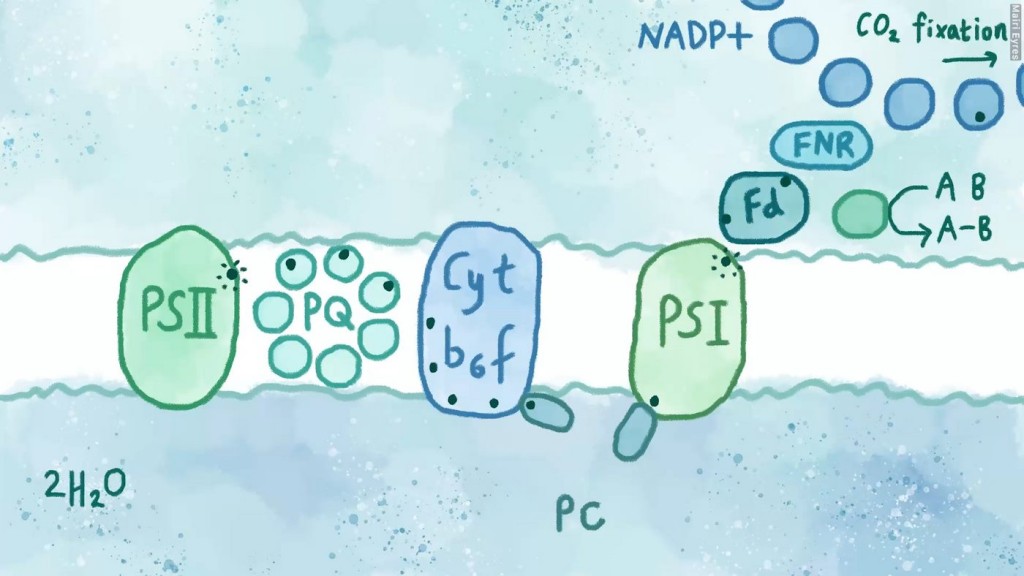
A “mind-blowing” discovery in the early stages of photosynthesis has been discovered by scientists that could help improve the efficiency of renewable energy technologies.
While trying to figure out if it were possible to extract electrons from a known process in the early stages of photosynthesis, the scientists instead found an entirely-new electron transfer pathway, which for those who remember their biology 101, is the metabolic method that extracts the most energy from food.
The study’s authors believe this new understanding of photosynthesis could create new and more efficient ways of harnessing the process’s power to generate biofuels.
The research team, comprised of scientists from across the globe, first set out to understand why a ring-shaped molecule called a ‘quinone’ is able to steal electrons from the photosynthetic process
Quinones, which are common in nature, are able to easily accept and give away electrons.
Using a technique called ultrafast spectroscopy, the study team observed how quinones behave in photosynthetic cyanobacteria which obtain energy via photosynthesis like plants and algae.
Observing the process at an incredibly fast timescale of a millionth of a millionth of a second, the researchers found that the protein scaffold where the initial chemical reactions of photosynthesis take place is leaky, enabling some electrons to escape.
This leakiness could help plants protect themselves from damage from bright or rapidly changing light.
The researchers say that being able to extract electrons at an earlier point in photosynthesis could come in handy when manipulating the photosynthetic pathways to create clean, renewable fuel from the sun.
OTHER PLANT POWERS: Plant Toxins Fatal to Sugarcane Hailed as the ‘New Weapon’ Antibiotic in Fight Against Bacteria
For the same reasons, they think the ability to regulate photosynthesis could also enable crops to become more tolerant to intense bouts of sunlight.
“We didn’t know as much about photosynthesis as we thought we did, and the new electron transfer pathway we found here is completely surprising,” said corresponding author Dr. Jenny Zhang from Cambridge
“…we thought we were just using a new technique to confirm what we already knew. Instead, we found a whole new pathway, and opened the black box of photosynthesis a bit further.”
MORE SCIENCE NEWS: Researchers Can Now Make Clean Hydrogen Fuel By Pulling it Directly From Seawater—No Filtering Required
“At first, we thought we’d made a mistake: it took a while for us to convince ourselves that we’d done it,” said Dr. Zhang. “The fact that we can steal them at an earlier process is mind-blowing.”
Photosynthesis is a wholly natural process, and scientists have been studying ways in which we can harness it to address the climate crisis.
For example, scientists have been looking for ways to mimic processes to generate clean fuels from sunlight and water.
Dr. Laura Wey, who is now based at the University of Turku in Finland, added told Cambridge Univ. Press that since the electrons from photosynthesis are dispersed through the whole system, more of them can be accessed.
“The fact that we didn’t know this pathway existed is exciting, because we could be able to harness it to extract more energy for renewables,” said Dr. Wey.
SHARE This Basic Science Breakthrough On Social Mdia…




















